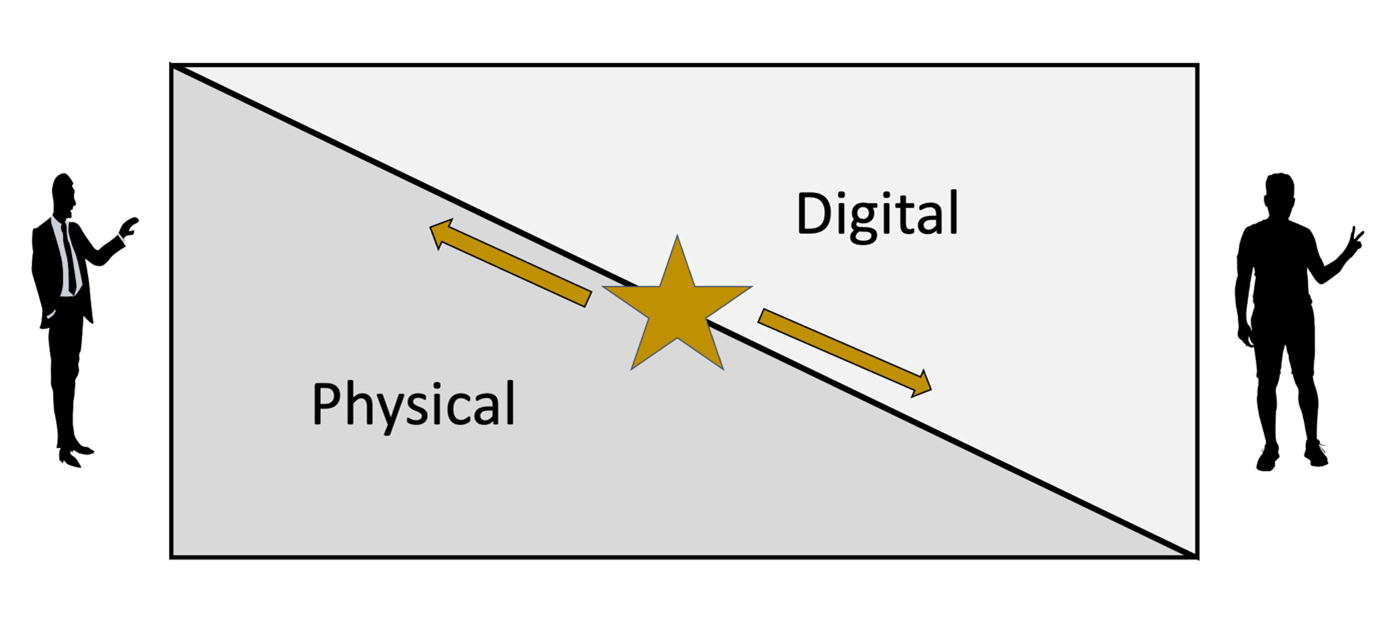What is digital’s impact on sales?
Not too long ago selling and business development was a human activity, primarily undertaken face-to-face. Today, the primary channel is digital. This physical remoteness from the buyer, added to a long-standing inherent mistrust of sellers, is creating a chasm which few understand.
The mechanics of buying have shifted enormously. The rise of online has created a wealth of information, enabling buyers to diagnose problems and evaluate solutions. However, this explosion of information and freedom to self-diagnose has led to a slowdown in productivity, as organisations misdiagnose issues and pursue the wrong solutions.
This is exacerbated by the different generations. Long-standing sales leaders tend to inhabit the physical world, creating relationships before they sell. However, they are looking for the new digital generation to lead the way within their salesforce. The complication is that these digitally adept youngsters are rarely well-versed in the art of relationship building, as they infrequently work in the physical business world.
The ideal mix is somewhere between the two, which would require sales leaders leading on digital in the sales process and young sellers becoming more relationship orientated.

Are we lost in Digital Translation?
The issue is that businesses have yet to fully appreciate this shift and have mostly only tweaked the old physical processes and methodologies, instead of re-imaging the processes required in a digital world.
For many, we start rooted in the old worlds of legacy processes and legacy attitudes. In the physical world, you had to build a relationship before you could sell, yet today, the pressure is based on activity measured through metrics and goals, easily demonstrated through digital activity but not necessarily resulting in sales success.
Digital is here forever
The question is: how do we address the problem? Offering people an updated version of the existing methodology won’t work, if the existing ways of working no longer suffice. What is digital’s impact on sales?
Not too long ago selling and business development was a human activity, primarily undertaken face-to-face. Today, the primary channel is digital. This physical remoteness from the buyer, added to a long-standing inherent mistrust of sellers, is creating a chasm which few understand.
The mechanics of buying have shifted enormously. The rise of online has created a wealth of information, enabling buyers to diagnose problems and evaluate solutions. However, this explosion of information and freedom to self-diagnose has led to a slowdown in productivity, as organisations misdiagnose issues and pursue the wrong solutions.
This is exacerbated by the different generations. Long-standing sales leaders tend to inhabit the physical world, creating relationships before they sell. However, they are looking for the new digital generation to lead the way within their salesforce. The complication is that these digitally adept youngsters are rarely well-versed in the art of relationship building, as they infrequently work in the physical business world.
The ideal mix is somewhere between the two, which would require sales leaders leading on digital in the sales process and young sellers becoming more relationship orientated.
We need to go back to the drawing board and think about what we’re trying to achieve, what’s possible, and how we might create that scenario. Clearly, digital is now ubiquitous. Well over half the global population have a smartphone and access to the Internet. And a similar number are active social media users who do much of their research using these mediums.
The art of the possible will not come about by accident
The answer is to fully embrace the opportunity. Previously, we have tried integrating digital-first into our existing sales strategies. The solution is to try integrating any remnants useful from existing strategies into a new digital-first strategy.
The average person spends hours on social media posting, commenting, and consuming content from their network. We must acknowledge that humans are social beings and that every one of us has spent our life building, growing and engaging networks. This is where the true value lies – in the people we and our teams know.
As social is the default for humans, this means that our strategies need to be centred around social activity. In the modern world, digital is the delivery platform for humans to be social, so we need to have a clear strategy about how we are going to digitise social interactions to maximise the value that we and our prospects or customers can get from these interactions
This process begins by recognising that everybody in the organisation, from the chief executive to the receptionist, has a role to play in the growth and success of the business. This is not getting everybody to prosecute their networks and their relationships for the benefit of the business but getting people across the organisation to understand how their relationships can be the lifeblood of the organisation’s future success. There needs to be safety measures to ensure people do not go “off the reservation” but that is an operational issue rather than a strategic challenge.
Creating a strategy begins with understanding who we are as an organisation, who we must look attractive to, and what those individuals need to see to arrive at the decision that we are the provider they need.

Five key benefits from an integrated digital social strategy:
Increased visibility – in a world where everybody is a content creator, noise in the marketplace on all channels is greater now than ever. Simply creating better content does not solve the problem. What will solve the problem, as Seth Godin said, is that ensuring “the context is more important than content”, meaning that having the right context is key to engagement.
Increased credibility – when everybody claims to be market-leading, customer-focused, responsive to your needs, etc, these words do not have any meaning. To show credibility requires the prospect to consume, understand and believe your content. To get them to consume we need to use our digital-first strategy to build relationships.
Increased revenue – anybody in the B2B space will recognise that the sale only occurs from a conversation. Digital social channels provide an almost infinite scaling of conversations. This is a dream come true for both marketers and sales leaders if these technologies and the dynamics of these tools are used intelligently and humanly. The more conversations we can have, the greater the opportunity to create new business.
Easier recruitment – of the reasons why people want to work for an organisation, a clearly articulated vision and well-deployed strategy is particularly appealing. If everybody knows that you are a smart employer, it makes sense that you will be the place that most people want to work.
Improved staff retention – since the pandemic, the team concept is quite abstract. With people working from home and not having social interactions with others in the workplace, we have seen increased dissatisfaction and a higher churn rate among staff. Imagine using digital channels to engage your team in the kind of conversations they would have had in the lunchroom or the pub. This is possible, but it will not happen by accident, it needs to be driven through your digital-first strategy.
Conclusion
Every organisation needs a clear plan about what they are trying to achieve and how this can be digitally realised. Success requires everyone to play their part, so people will need to be educated, empowered and supported, which in turn encourages them to become advocates for the business in their own lives and social networks.
The reason this is exciting is because it creates an amazing opportunity to develop multiple conversations at minimal cost. This leads to empowering the people within your organisation to be both happier and more productive, thus creating more business.
You may consider this to be a utopian dream, but organisations that have only partly achieved this have seen exponential growth, showing that it is possible with the right level of thought and commitment.
So, where to start? Begin with the end in mind, defining the best digital sales strategy for you, including the role and behaviours of your salespeople.
Written by Adam Gray
As co-founder of DLA Ignite, Adam Gray develops the core methodologies, intellectual property and strategic insights that underpin their success, creating a comprehensive framework that empowers individuals and teams to confidently navigate the complexities of the digital world, build connections that foster trust and spark meaningful conversations, and achieve their business objectives.

